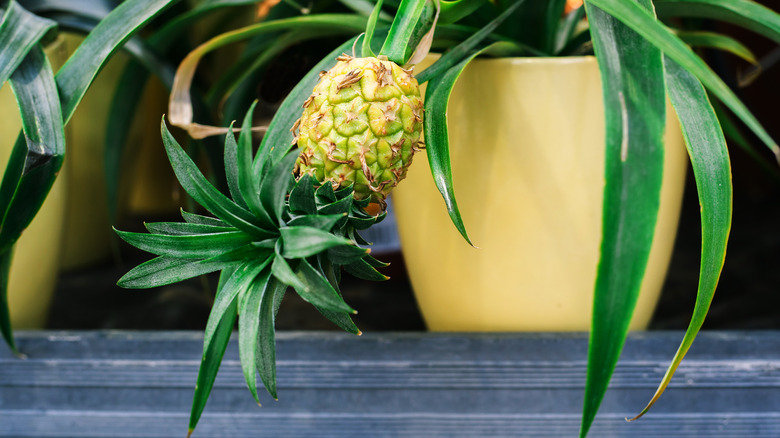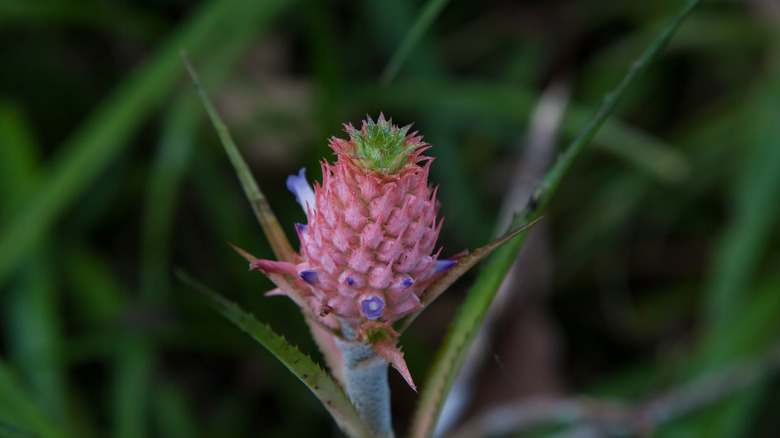Why The Top Of A Pineapple Is Called A Crown (And How To Remove Them)
The pineapple is a fruit with a fascinating history. Although it originated in South America, the succulent fruit became famous in Europe after Christopher Columbus brought back examples from his early voyages to the Americas. The fruit became widely associated with nobility, a fact usually credited to its sweet flavor as well as its rarity. French king Louis XV and Russian empress Catherine the Great were among the aristocrats enamored with the exotic fruit.
There may be another reason for pineapple's association with European nobility beyond the ones generally surmised. Yes, it was rare and expensive, and it had both a sweet taste and an unusual, eye-catching shape. The latter is an important clue, as the spiky leaves that protrude from the top of the fruit above its hard outer skin, have a very particular name. They've been referred to by several terms, but the most relevant one is "crown." Is it any wonder, then, that kings and queens were drawn to the pineapple?
How to remove the crown of leaves
Although the collected foliage atop a pineapple is referred to as a crown, the constituent parts are known as leaves or fronds. Each pineapple's crown has up to 40 leaves attached, an assortment that can seem somewhat imposing for those trying to get at the interior fruit.
Fortunately, however, these leaves are quite easy to remove. If the fruit is ripe, they should come right out when pulled. If this method doesn't work, it may mean the fruit isn't quite ready to eat. As with many fruits, a pineapple's ripeness may be judged by its color. A pineapple's outer skin appears greenish when it's underripe, but as it ripens, its skin becomes increasingly yellow. When the pineapple is overripe, it starts to turn dark orange.
Of course, there's also a full-proof method for removing pineapple leaves — one that doesn't involve pulling. Simply cut the crown off with an appropriate knife. A chef's knife, for example, is ably suited to the task. You're going to need a knife anyway to access the interior fruit, and most experts recommend starting by cutting off the pineapple's top and bottom parts.
How pineapple leaves are used
Pineapple leaves aren't useless. Traditionally, they're esteemed as a fiber source, a utility reflected in cultural practices around the globe. In China, for instance, the leaves are used to make textiles; on the island of Guam, they're woven into fishing nets; and in Western Africa, they've often been used in ceremonial clothing items for tribal leaders.
The crown is also highly sought after for its appearance, and not just in fabrics. In fact, there are several variations of pineapples (aka Ananas comosus) that have been crossbred for decorative value alone. Typically, these ornamental pineapples are notable for their pink and red color as well as their lush foliage and majestic crowns. Smaller sizes are likewise much in demand — the so-called champaca pineapple is an ornamental version that is only 5 inches in length, crown included.
Pineapple leaves have long been utilized for their healing properties, too. The crown's leaves are distinguished by their antioxidant and anti-inflammatory qualities, and they possess phenols and other natural compounds capable of improving digestion, blood cholesterol, and blood sugar (via The Punch).


